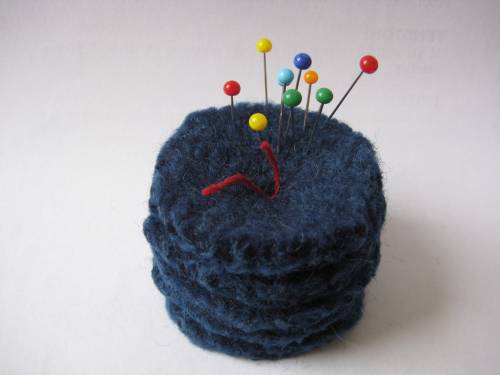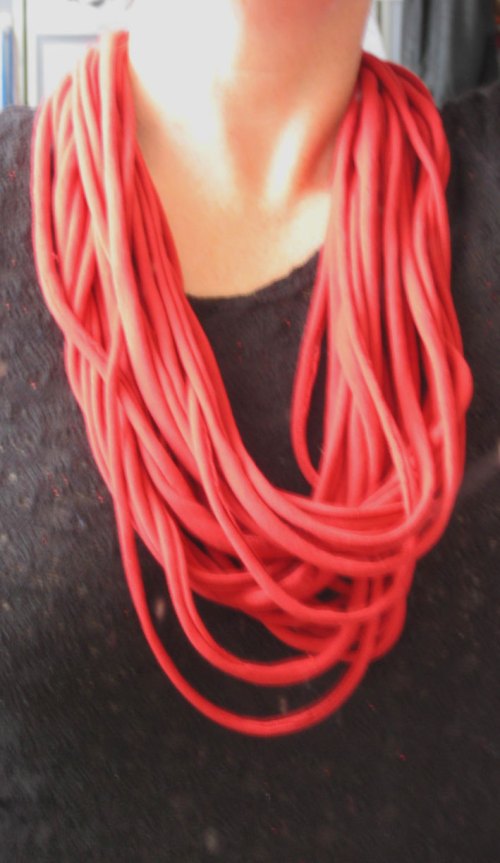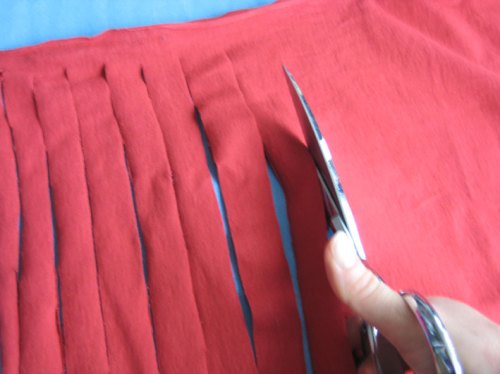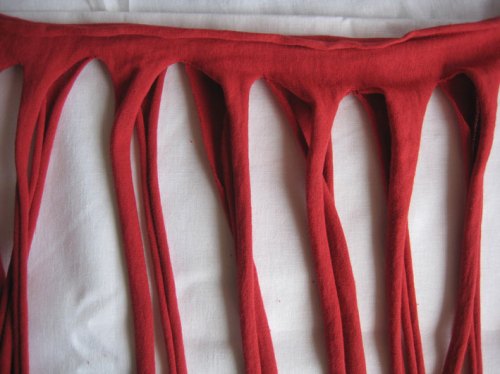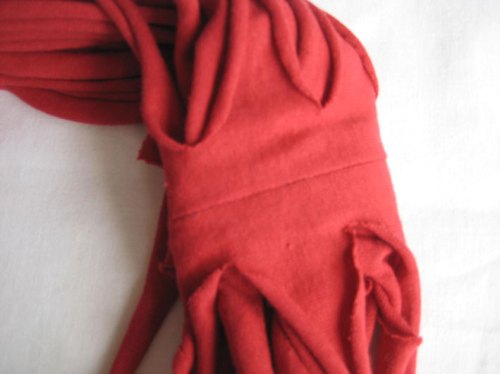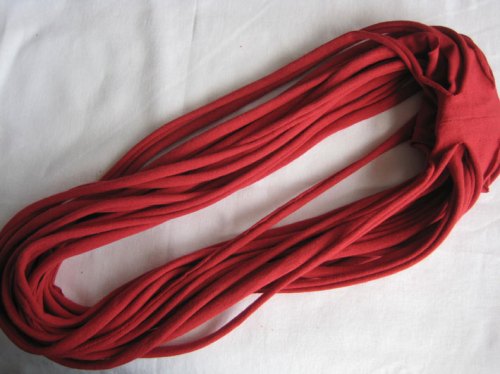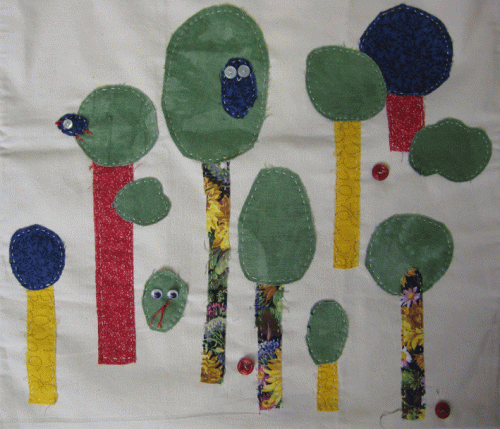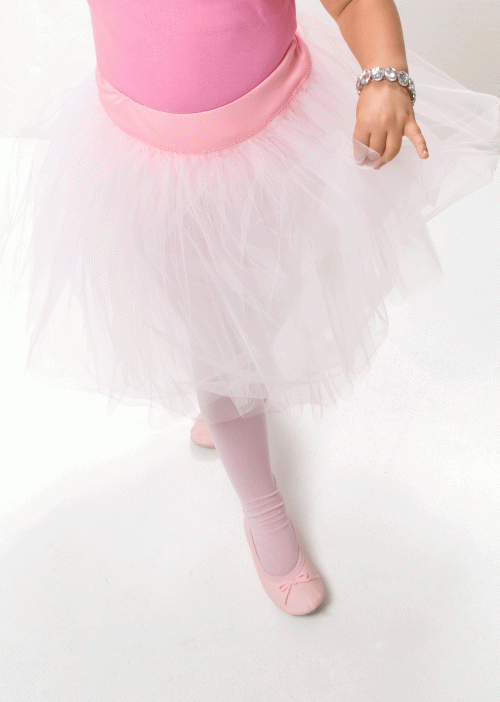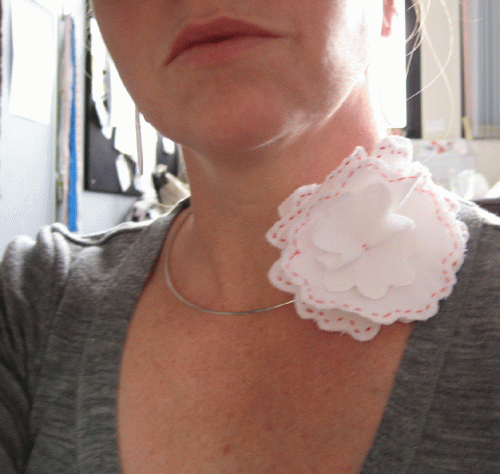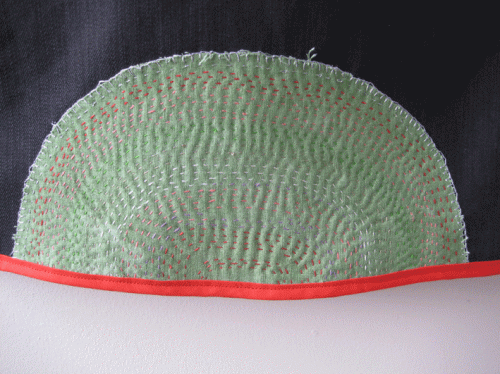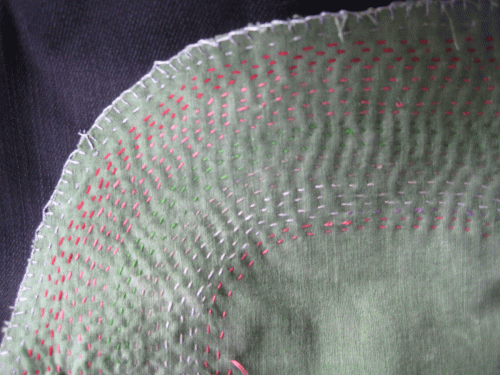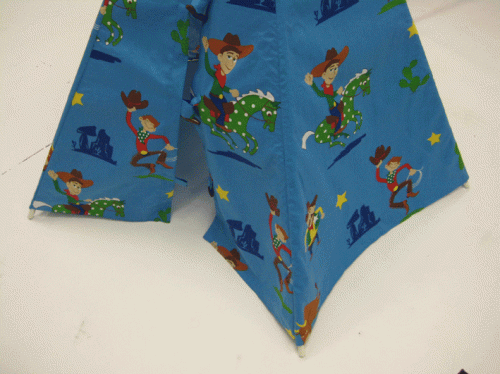
Some gorgeous cowboy fabric is coming into the store (maybe it’s there already), and while you’ll have to swallow the irony of making a tee-pee out of cowboy fabric, the results were good, and well worth the effort.
Bring it on:
Child’s Tee Pee
You will need:
- 1.5 metres of lightweight interfacing (to draft your pattern)
- 5.5 metres of “cowboy” 140cm uncoated fabric (available in blue or taupe).
- 5 x 16mm P/C (powder/coated) Rod 150cm in white or Ivory. (available in the curtaining section of Lincraft)
- Large spool of thread to match fabric.
- 3 Large wooden toggle buttons
- 2 (or more) large rubber bands
- An iron
- A sewing machine.
- Sewing needle
- Sticky tape.
Stage 1 – Drafting your pattern (5 pieces needed):
Fold your interfacing in half lengthways so there is a 45cm section that is doubled over. Pin lightly in place. Mark out a vertical line 44cm high. Measure sideways from this line a distance of 130cm and mark out another line that is 6cm high. Join these two lines, and cut carefully through both layers of interfacing to make your first pattern piece (Main tee-pee panel – you will need to cut 4 of these in your fabric, being careful that they all point the same way).
Open out your interfacing again, and in the remainder mark out a narrower shape. Mark one vertical line 51cm high, Measure sideways from this line a distance of 130cm and mark out another line that is 10cm high. Join these two lines, and cut carefully to make your second pattern piece (Tee-pee front flaps – you will need to cut 2 of these in your fabric, being careful that they mirror each other).
In the remainder of your interfacing:
Mark out a rectangle (A) 45cm x 12 cm (Top tie – you will need to cut one of these from the main fabric)
Mark out a rectangle (B) 24cm x 6cm (Fabric to hold the toggles in place – you will need to cut 3 of these from the main fabric)
Mark out a rectangle (C) 16 cm x 10cm (Fabric loops to hold the toggles – you will need to cut 3 of these from the main fabric)
Cut all pieces carefully and write on the centre of each one how many are needed from the fabric and their purpose.
Stage 2:
Cut out your fabric pieces, being careful to ensure that all parts of the tee-pee body are pointing the same way. We cut out the 4 largest ones first (one at a time) – keeping to the right side of the fabric, and ensuring the grain was straight. The front flap pieces were then able to be cut from the left side of the fabric. Remember that these front flaps need to mirror each other – so turn the pattern over to cut the second piece.
You will find that there is fabric left over, which is unavoidable when working with a large print with such an obvious nap. We suggest making cushions – or perhaps piecing together a floor rug to match with the leftovers.
Stage 3: Sewing the tee-pee.
Our tee-pee is created using sleeves that hold the poles firmly in place. These are created with a variation of the French seam, so don’t worry that there seem to be raw edges showing in the first step – they will be hidden by the end.
Step 1 – preparation.
Zig zag all edges of the tee-pee body.
Take one of your front flaps, and a main body piece. Keeping the narrow edges of all pieces together, pin the wrong sides together, and stitch a 1.5 cm seam along the angled edge. Take your next piece and join in the same way. Keep going until all body pieces are joined with the seams pointing outwards to the right side of the fabric and finishing with the mirrored front flap.
At this point a good ironing will make your job easier. Iron along each seam to flatten it out, and when finished, iron and pin a narrow hem along the top and the bottom edges.
Use a decorative stitch – or zig-zag if you prefer, sew all hems in place.
Step 2 – joining the front.
Take your tee-pee back to the ironing board and turn inside-out. Pin the front flaps together and join 3cm in from the edge from the top down for 30cm. Sew this seam, and hem the remaining open length of the flaps.
Step 3 – sewing the pole sleeves.
You must be precise about these seams as they need to be the right size to hold the poles snugly, but not so small that the poles can’t go in without a struggle.
*Tip – measure 3cm to the right of the needle on your sewing machine table, and mark that with a length of sticky tape. Use this line as a guide when sewing and your seams will be the right width (a 6cm sleeve).
With the tee-pee inside-out, fold each panel flat, iron the seam, and pin down the length approx 3cm from the edge. The raw edges should be well and truly hidden in these seams. Using the guide marked on your sewing machine table, sew a seam 3cm from the edge for each adjoining panel making sure to reinforce the beginning and end of each seam to protect them from wear. When all 5 sleeves are completed, turn the tee pee right side out.
Step 4 – making the fastenings.
Top tie (A) (decorative) Take the large rectangle piece you cut for a tie, fold it in half lengthways (right sides facing) and sew bottom and side, leaving one end open. Turn to right side, and tucking a small hem in at the exposed edge, overstitch around all edges to fasten the open end and neaten the tie.
Toggle ties (B): The toggles we chose had a large enough hole to allow fabric to pass through. If yours don’t you may wish to substitute 6cm lengths of ribbon or rope, and attach the toggles to the tee pee in your own fashion. Otherwise, take the 6cm long tie lengths, fold in half lengthways, sew, turn right side out, and thread through the toggle holes. Sew to the tee-pee by hand once the tee pee is completed..
Toggle Loops (C): Fold in half lengthways (right side facing), sew seam and turn right side out. Fold in half vertically to form a loop. Iron, and sew to inside the front flap of the tee-pee.
Step 4 – Assembling the tee-pee
With the tee-pee right side out (so sleeves are to the inside), insert each pole, being careful not to damage the fabric as you go. You may find it easiest to do this on the floor as it takes a bit of fiddling once a few poles are in place.
Stand the tepee up, and start to fan out the base. You will need to adjust the poles at the top to get it standing correctly. When you are happy, hold the top poles in place with a few large rubber bands – which will grip and keep everything in place nicely. Cover the bands with the decorative tie, and sew the toggles in place – ensuring they fit through the loops to close the tee pee.

Enjoy!
Read Full Post »
